Video Game Retrospective – The ‘Modern Warfare’ Trilogy
When a new generation of consoles arrives on the market we need that one game that shows us exactly what the new systems are capable off. With the Playstation 3 and the X-Box 360 that game was Call of Duty 4: Modern Warfare. Five years later another two games in the MW series and two unrelated Call of Duty games have been released. Public attitude towards the series has cooled and sales have dipped but it’s still one of the most significant game series of all time. Although the multiplayer aspect is what kept people playing over the long term the single player campaign has done just as much to influence the industry.
In this retrospective we’ll be turning our gaze to the campaign mode of the series, as enough has been said about the multiplayer and this, at times, can overshadow the other excellent aspect of the game.
What separated out MW from the rest of the previous series and the existing market of first-person shooters was the time period it was set in. FPS were either science fiction themed, such as the Halo series, or set during WWII with the Nazi’s positioned as the villains. Blasting aliens using what appear to be nerf guns or mowing down endless hordes of Nazi’s did nothing to challenge the player’s expectations and the genre retained its reputation as being ‘dumb fun’. Setting a shooter game in the modern day using real-world politics as the ground work for the story could’ve been downright tasteless, but addressing the current political and cultural climate in regards to war is one of the things that made the games stand out from the crowd.
In the original Modern Warfare the players take on the dual roles of two mute soldiers – Pvt. Joseph Allen of the United States Marines and Sgt. ‘Soap’ MacTavish (who was late to work the day they handed out cool nicknames) of the SAS – providing two different viewpoints in an international conflict. The action kicks off with the leader of a Middle Eastern separatist group stages a coup and takes over a small nation while backed by a Russian arms dealer. The US military promptly storms into the unnamed Middle East country to regain control of the oil market while the SAS complete a number of covert missions around the globe to round up the leaders of the action.
Stepping away from the glorification of one nation as the ‘good-guys’ there is a realistic depiction of war in the initial game. The bad guys did nothing to garner our sympathy, a common tactic in narratives that wish to become well rounded, but instead the actions of the Americans and British troops that include the player become questionable, as does the act of war. This notion is mostly evident when playing from the POV of Pvt. Joseph Allen who is part of the US invasion force in the Middle East. Seeing the ‘shock and awe’ tactics used in real life conflicts is as terrifying as it is awe-inspiring as fleets of heavily armed helicopters and tanks descend upon a third-world city being defended by groups of soldiers using out-dated weaponry. It’s certainly difficult to see one side of the conflict as being ‘glorified’ when it so completely out-classes the opponent on every level. The Marines act as a pack of yahoos, quoting action movies and playing rap music as they tear cities apart in the search of a single terrorist leader.
The most shocking moment occurs about halfway through the game when the Marines manage to drop the ball hard enough to leave a dent in the side of the globe. In response to their attack the separatists detonate an atomic bomb in the city, wiping out tens of thousands of US troops and civilians. This immediately follows a particularly daring and heroic rescue by the Marines and the contrast is exceptionally jarring, especially as the player is given a front row seat for the decimation, seeing another soldier get ripped out of the helicopter that they’re in before it crashes and Joseph Allen is left crawling through the remains of the city before finally dying. This marked Modern Warfare as a game that chose not to flinch away from the realities of war, setting levels in the deserted city of Pripyat and depicting the British SAS troops beating information out of their captives.
To say that it walks a fine line is an understatement and that the campaign mode of the game holds up well five years later shows how well they accomplished this without allowing the story to over-shadow the game. Using a design choice from previous Call of Duty games the story is mostly told through ‘scripted’ events in the campaign. During an early level on a cargo ship the vessel is struck by a torpedo and starts sinking leaving the player scrambling through rising waters, or the sudden appearance of a patrol on a stealth mission forces players to take a different route. This interactive story telling is used to greater effect in the sequels, such as a sudden sand storm enveloping the player during Modern Warfare 3, drastically changing the goals and the gameplay for the level. Depicting these events in game rather than in cut-scenes keeps the player involved in the drama and heightens the impact of the realities of war as depicted in the game.
Sadly the ability to walk a fine line between gritty realism and silliness is lost in between the first two games. Somewhere along the line characters have gone from being every-day soldiers, a small cog in a larger machine, to some kind of demi-god of the modern world. Capt. Price, the cigar chomping, porn-‘stached no-nonsense mentor character of the first game turns up alive halfway through the game, after being shot and declared dead on the conclusion of the first game, and goes on to play a major role in the story from that point. Likewise his wise-cracking sidekick Gaz has also been re-incarnated as ‘Ghost’, a member of the SAS who never takes of his skull patterned balaclava, after being shot in the face previously (although it is never openly acknowledged as being the same character they are voiced by the same actor and have the same personality). While leaping from a rooftop onto a helicopter was a daring feat in the first installment, ramping a snow-mobile over a ravine while shooting a enemies one-handed is par for the course in the second outing. The less believable corrupt and map-cap US General who plays the villain this time around may have been convincing if it wasn’t for his speech about how GREAT war is, but everything goes out the window when he is defeated by the player character getting thoroughly stabbed through the chest, pulling the knife out and perfectly throwing it into the General’s face – then surviving the several inches of chest stabbing to play a major role in the next game.
Things improve substantially in the third and final game of the series when the developers turn their attention away from the convoluted story and the increasingly forced message about the futility of war and more onto the set pieces. The action takes place in major world cities ranging from New York to London and Paris, and the devastation on show is more than enough to communicate the impact of war. The second game attempted to do this but over-played their hand by focusing the action on Washington monuments including the White House. Spending time in the civilian areas in other levels winds up leaving a greater impact.
The developers also substantially overplayed their hand into trying to evoke the same impact as the nuclear bomb in subsequent games. The infamous ‘No Russian’ portion of the second game has players play as an undercover CIA agent acting as a Russian terrorist and shooting up an airport. This excessively gratuitous sequence drags on for quite some time as the player is forced to walk slowly, possibly to soak in details like wounded people crawling away and people trying to drag others to safety only to be gunned down themselves. It’s easy to wind up feeling as though the designers were reveling in the ability to court controversy by including this level, especially with the earnest ‘warning’ given at the beginning of the game that informs you that the content may be offensive and checks (then double checks) that you’ll be OK with that – one gets the sense that this was to generate hype more than anything else. The ‘compensations’ included, such as not including any form of reward for completing the level, are token at best.
This routine repeats itself in the third game, this time putting characters into the skin of a parent filming their holiday vacation when their young daughter is caught in a terrorist bomb. This sequence is downright perplexing, as by this stage of the story the third World War has been raging for quite some time and the death toll is already imposing without having to pointedly add a single child to it. More effective are the smaller moments that occur during the actual gameplay, such as the Prague level when you see groups of civilian prisoners being executed while being powerless to stop it, or simply entering a half-bombed shop to come face-to-face with one of the victims of the attack.
At times it feels as though the developers have looked at what people have been talking about most and assuming that we wanted more of the same. The problem occurs when the most talked about moments are those that surprise us, and using the same technique again and again is going to be less surprising and therefore less interesting. It was a huge shock when the player controlled character was killed halfway through the first game but eventually characters were getting introduced for the sole purpose of being killed after one level.
Ultimately the campaign tells a gripping and thrilling story of the world being driven to war. It maintains a gritty realism that previous shooters lacked, where even little details are used to flesh out the experience. At one point while playing I was rushed by a Russian soldier and during the urgent scramble into action I noticed that he was wearing glasses – simple elements like that make it feel like a possible scenario (excluding some of the second game’s tomfoolery) instead of facing down hordes of endless, faceless foes. Although some players may not enjoy the design of leading the character through a mostly linear pathway from the beginning of the level to the end the scripted scenarios are impressive enough and varied enough to keep things interesting and the huge amount of detail in the environments keeps every part of the game feeling fresh and original.
Although the story is pretty solid, well above the bar for the genre, video games never break the bank based on story. It’s a sad fact that what is increasingly a narrative based form of entertainment still can’t sell itself solely on story, instead it has to be supported by good gameplay. That’s certainly something Modern Warfare has in spades.
There’s nothing particularly original about the control scheme…’X’ to jump and trigger buttons to shoot the guns and whatnot. What makes it stand out is the little it does to incorporate the different scenarios that the player will encounter. There are plenty of levels that require stealth tactics or vehicle segments, but the same control set-up is used while many other games will require a different set of controls of each context. Assassin’s Creed and Grand Theft Auto being two series’ that do this and unless you’re paying close attention during the tutorials then you’re in for many hours of controller fumbling. Modern Warfare has you keep your thumbs on the same buttons whether you’re in an urban firefight or sneaking through a field, allowing quick and smooth transitions.
It also manages to avoid some of the over-played gaming mechanics that have been popular, most notably a cover system. Gears of War became a smash hit with the ‘forced’ cover system wherein the player presses a button that firmly glues them to a wall where they often have to press another button to detach. Modern Warfare goes with the far more traditional ‘ducking’ behind a piece of cover and the game works out that you’re hiding from enemy sight. Quick-time events manage to sneak in but not to the point of being intrusive – although it’s frustrating when the big finale relies on the player pressing buttons in sequence.
More than a couple of games have been quick to look to Call of Duty games as a source of inspiration. Logical, given the massive amount of success it has had. The notion of creating a realistic shooter set on a modern battlefield has become common, and the number of fictional conflicts happening on consoles right now greatly outnumbers the actual conflicts taking place over the past decade. Sadly many of the games jumping on the bandwagon fail to grasp the basics that made the series so great. The huge amount of variation in setting is one feature. Many shooters follow a linear story while Modern Warfare sends players to a completely different area on each level, switching from raining Prague to African dock area at a moments notice. The set control scheme also goes out the window in many imitators as they seek to include their unique selling point.
If you haven’t played Modern Warfare then you haven’t fully experienced what the modern era of console gaming has to offer. Given the price it goes for these days you’d be foolish to pass it up. Any game that can slip in nods to Aliens and The Rock are worth my endorsement.

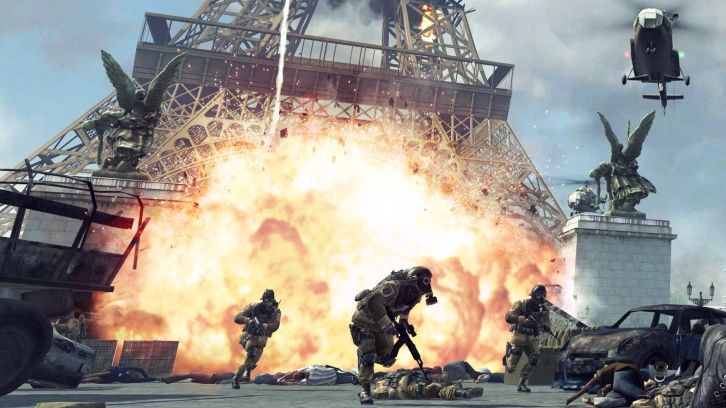
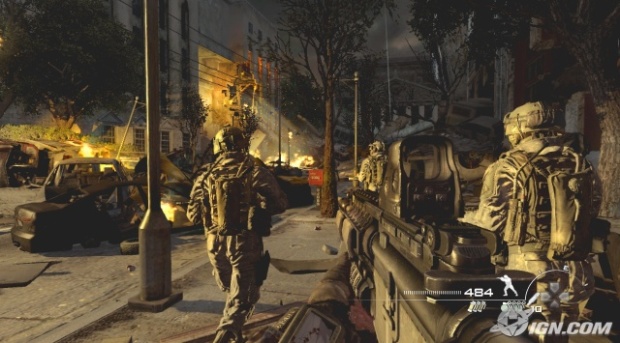
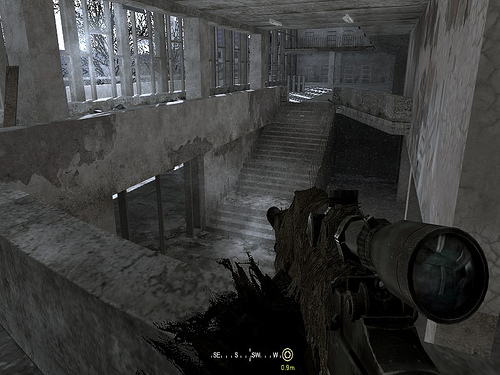

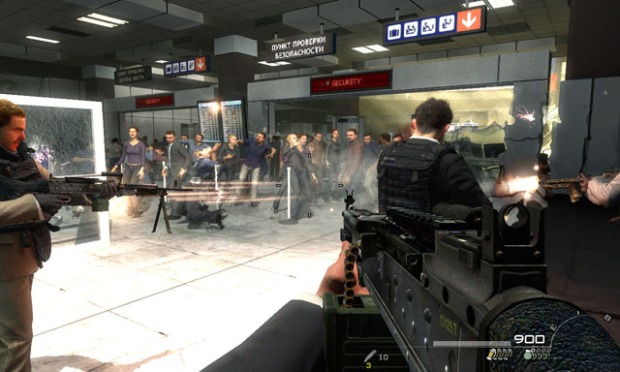
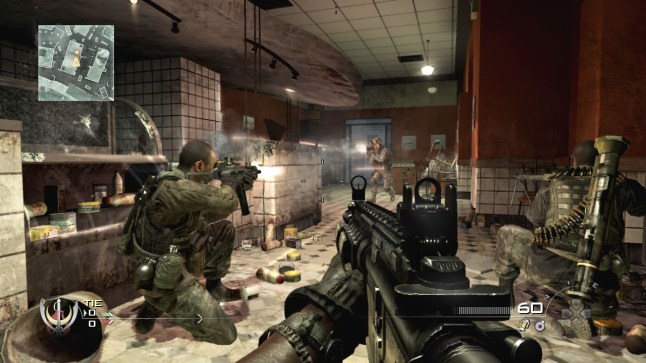
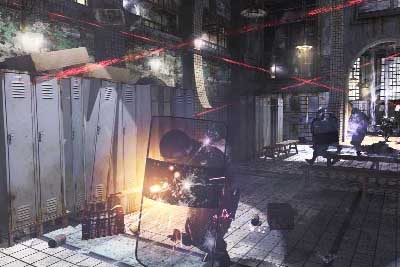


The stories and immersion were indeed superb, but sadly the gameplay did not evolve that much past the first game. MW1 introduced bullets penetrating walls, which made a big difference to the way you sought cover, but I can’t really think of any big changes in the 2nd and 3rd games, aside from refinements in the multiplayer component.
The Spec-ops in 2 are great though!
LikeLike
It’s a shame they didn’t mix in any new elements into the campaign aside from little things like the ‘breach’ mechanic, the series could’ve avoided falling out of favour.
LikeLike